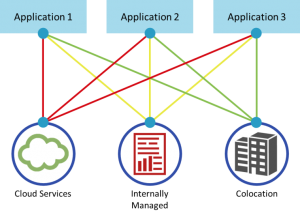I’m back with some new data on the diversification of the data center and the distribution of clouds…here’s what we found…
When reviewing Seagate clients, the total number of cloud data centers utilized by each client was counted. The data shows that while most clients are utilizing only one data center in the Seagate network, a trend has emerged where clients are moving their data to be closer to the source. We see this trend in particular where clients are mixing a combination of Seagate Cloud and Microsoft Azure Cloud internationally.
The highest number of data centers utilized by a single client is six.
Let’s examine some reasons for the distribution of clouds.
Regional Offices – Proximity to the Source
Many businesses maintain branch offices across regions or countries. In this case, an organization may choose to utilize cloud data centers in close proximity to their headquarters and branch offices. The ability to host applications in a cloud varies, some applications have extremely efficient protocols and are not highly constrained by latency or bandwidth, while others are severely constrained (financial services and data feeds) where a few seconds can affect reporting and decision making. In the case where latency does affect the network mobility of applications and data you may consider utilizing cloud data centers close to the source of data generation or transaction entry.
Globalization/Internationalization
Organizations spanning the globe often face high costs and limited choices for circuit providers and available bandwidth speeds. This reality often drives organizations to use on-premise appliances for quick recovery over the Local Area Network (LAN). The use of a LAN increases the speed of file transfer (little to no latency) and recovery, but does not allow for the network to expand or cover any geographical distance.
Hybrid Clouds with Central Management
Some organizations diversify the location of their data centers through hybridization of infrastructure. This is common among organizations that run multi-tiered applications, integrating cloud services with a combination of dedicated hosting, managed hosting and colocation. Each environment is hosted in a different facility or network of facilities, thus increasing redundancy and dispersion. Other benefits of hybridization include maximizing performance and the ability to adjust to business needs.







